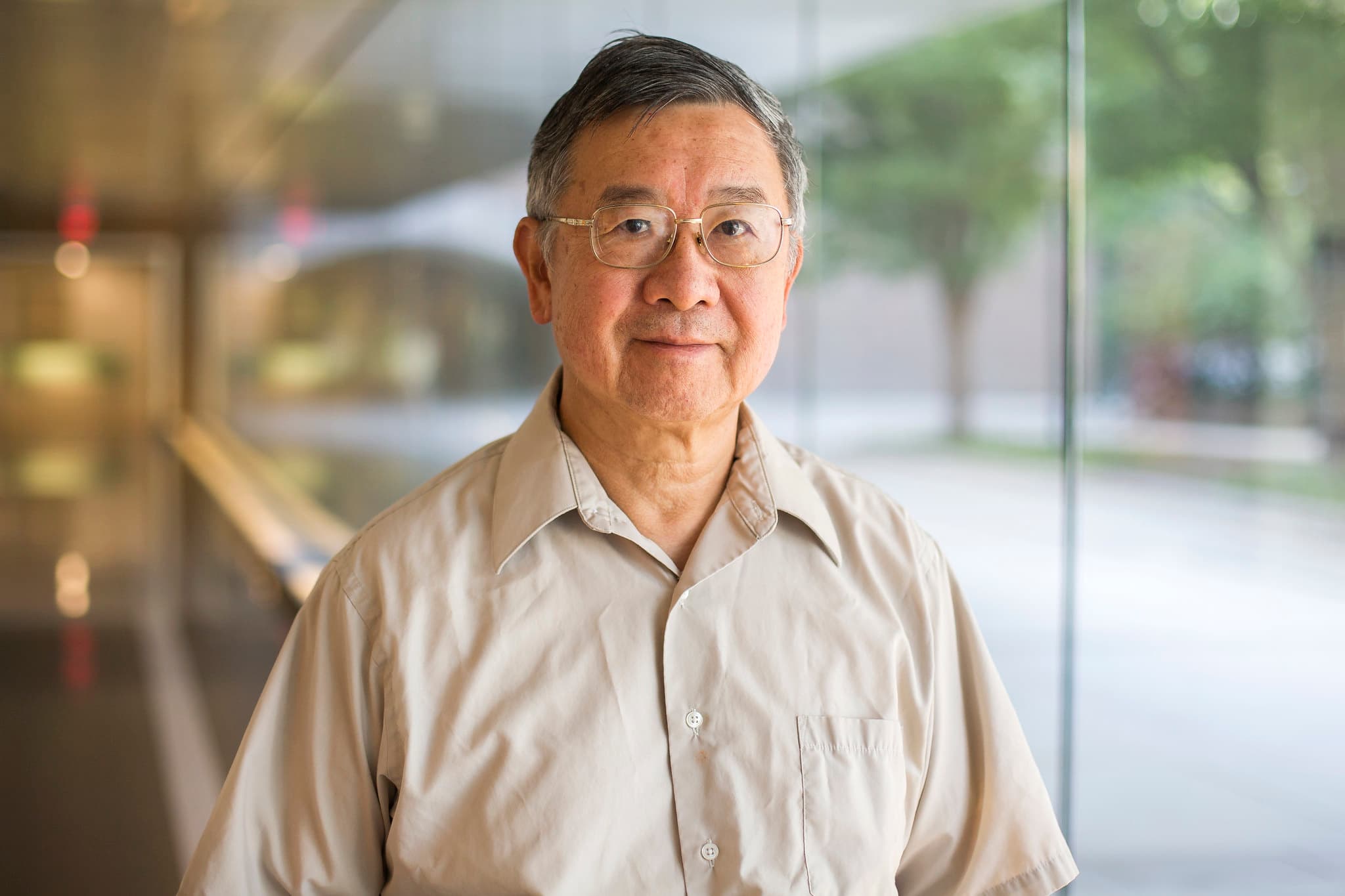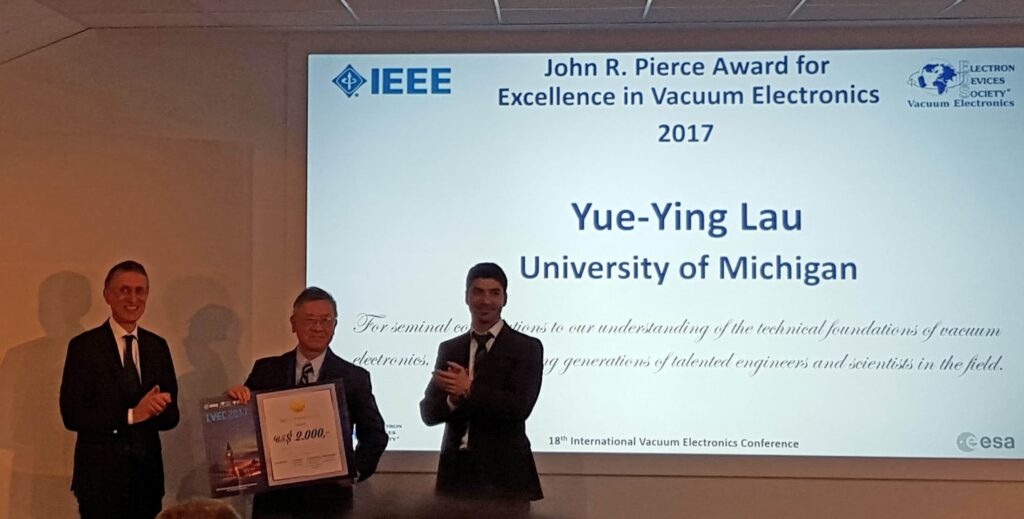
Yue-Ying Lau retires after 30 years at NERS
Lau’s legacy will be marked by contributions to research, mentorship, and innovations in plasma theory and electron beams.

Lau’s legacy will be marked by contributions to research, mentorship, and innovations in plasma theory and electron beams.
Yue-Ying Lau, prof. of nuclear engineering and radiological sciences, has retired after 30 years with the department. His storied career has left an indelible mark in the field of plasma theory and the physics of electron beams. He became Professor Emeritus on January 1, 2022.
“Professor Lau has had a distinguished career in which he made seminal contributions to the physics of plasmas, electron beams, and coherent radiation generation,” said NERS prof. and former chair Ron Gilgenbach. “He had a major influence in training generations of students in plasma theory. Many of his former students have become leaders in the field.”
Born in Hong Kong, Lau pursued his higher education at the Massachusetts Institute of Technology (MIT). He earned his BS in 1968, followed by his MS in 1970, and completed his PhD in electrical engineering in 1973. Early in his career, he became an instructor and assistant prof. in the Mathematics Department at MIT, where his research on spiral disk galaxies gained recognition as a major theoretical advancement.
Following his time at MIT, Lau made significant contributions as a research physicist at the Naval Research Laboratory where his pioneering work on gyrotron and relativistic-klystron amplifiers had a transformative impact on the development of high-power microwave sources. He joined NRL as an on-site contractor with the Science Applications International Corporation in 1980 and served as an NRL staff member from 1983 to 1992.
In 1992, Lau’s journey led him to the University of Michigan, where he joined the NERS faculty as a professor. He led the theoretical research group in the Plasma, Pulsed Power, and Microwave Laboratory. Together with his students, he authored definitive papers on a diverse range of topics, including beam and plasma stability, high-power microwave sources, dielectric breakdown and multipactor discharge, novel cathodes, wire Z-pinch physics, heating phenomenology, physics of crossed-field electron devices, higher dimensional and quantum diodes, and Thomson X-ray sources.
During his 30-year tenure at NERS, Lau commuted between Ann Arbor and his Maryland home, and guided the academic journey of 33 doctoral students as the chair or co-chair of their doctoral committees. His prolific research and contributions to the scientific community are evident in his publication record, which includes over 250 refereed papers, several book chapters, 11 patents, and numerous conference papers and abstracts.

Recognized for his exceptional accomplishments, Lau has been the recipient of several prestigious awards. Among his many honors are his election as a Fellow of the American Physical Society in 1986, and of the Institute of Electrical and Electronic Engineering (IEEE) in 2008. The IEEE also bestowed upon him the Plasma Science and Applications Award in 1999 and the John R. Pierce Award for Excellence in Vacuum Electronics in 2017. His commitment to the scientific community extended to his service as an associate editor for Physics of Plasmas for three terms, from 1994 to 2002. His contributions to the fields of plasma theory and the physics of electron beams will undoubtedly leave an enduring impact and inspire future generations of scholars and researchers. Here is what just a few of them had to say about Lau’s legacy:
“Professor Lau is the most welcoming, down-to-earth, and humble person I have ever met,” said former undergraduate student Dion Li. “In addition to shaping my perspectives in physics and research, he is a great friend and a wonderful person to talk to. I am delighted to have had the opportunity to work with him and I am proud to call myself one of his students.”
Lau’s former PhD student, David Alexander Yager-Elorriaga, said, “There are two memories that particularly stand out from my time working with YY. The first was immediately following our initial experiments incorporating magnetic field coils into our liner implosion experiments. I showed the data to YY who quickly observed the faint presence of helically oriented striations that grew in pitch angle as the liner imploded. We were shocked we could see such an effect! This data, along with the theoretical interpretation, ended up forming a central part of my thesis work. The second is of course happy hour at Charley’s!”
“I believe that every colleague who has worked with him and every student who has had the benefit of learning from him would have endless kind words for Prof. Lau,” said former student Fei He. “However, what I want to say is that, compared to what Prof. Lau has achieved either as a scientist or as a mentor for many, many successful Ph.D. students, it is far beyond what my language can possibly describe.” He continued, “Prof. Lau is a very capable theorist, a very generous person. He can wield his power with such a light touch, that almost everyone would have mistakenly thought that, in his own language, ‘a high school student could have done it’.”
Another former student, William M. White, said, ”We were in the MELBA lab (now the Plasma Lab) one evening. A group of several grad students, Prof. Gilgenbach, and Prof. Lau were all waiting for something I cannot recall, I asked Prof. Lau how his week was going. It was obvious that he was barely keeping his head above water. He then asked me how my week was going, and I mentioned that I was stuck on a problem in an ECE plasma physics class. Prof. Lau immediately said, ‘Let me look at what you have.’ I think I actually laughed. Without a hesitation or further thought to the demands on his own time, he wanted to help me. This was his first impulse when he saw a student in need.”
“Professor Lau basically shaped my way of doing research,” said former student Peng Zhang. “I am striving to apply the same principles of identifying and solving scientific problems to work with my own students. His kindness and caring for students also inspired me to become a better person. Best wishes for his retirement!”
“Professor Lau has had a remarkable career,” said Prof. Ryan McBride. “He has made major contributions to several areas of research. In addition to the 30+ PhD students that he has graduated, he has inspired countless other students through his popular teaching of graduate level plasma theory – namely, his teaching of the NERS 571/572 course sequence. His friendly and approachable teaching style helped these courses attract students from all across the university. I hear former students all the time reminiscing about their days back at UM taking YY’s plasma theory courses!”
Professors Lau and Gilgenbach worked closely during their tenures at NERS. Their intellect and expertise complemented each other, forming a dynamic duo that inspired students and peers alike. Former student Nick Jordan had this to say about the pair:
“From taking Ron’s NERS 471 class as an undergraduate, to my current position as an Associate Research Professor continuing their research program into the next generation, I’ve had the pleasure of working with Ron and YY for over 20 years and from a wide variety of perspectives. While there are many things that could be said about their excellence as researchers and academics, perhaps the most important is that they truly care about their students and setting them up for success.”
Professor Lau remains very active in the two years of his retirement. To wit, he was invited to feature his recent works on electron emission as a Plenary Speaker at the 2024 International Vacuum Electronics Conference, and as an Invited Speaker at the 2024 Gaseous Electronics Conference. He and his co-authors won the 2023 IEEE Transactions on Plasma Science Best Paper Award.